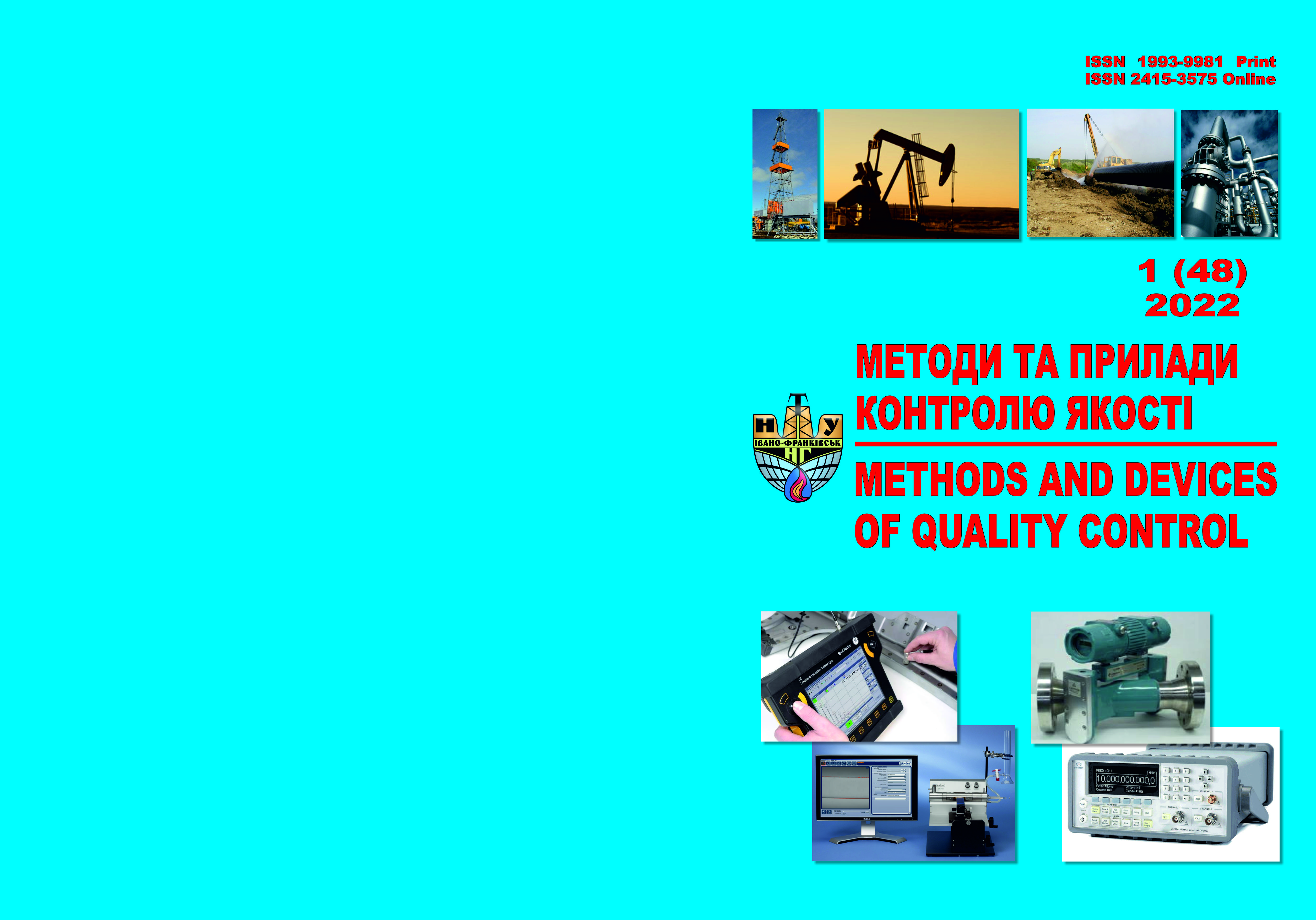ЧИСЛОВИЙ МЕТОД ОБЧИСЛЕННЯ КРИТИЧНОГО НАВАНТАЖЕННЯ НА ДОЛОТО ПРИ БУРІННІ СВЕРДЛОВИН
DOI:
https://doi.org/10.31471/1993-9981-2022-1(48)-115-126Ключові слова:
навантаження на долото, бурильна колона, метод Рунге-Кутта, метод найменших квадратів, емпірична модель.Анотація
В роботі розглядається вплив осьового навантаження на долото на форму бурової колони. Визначено, що збільшення даного параметру до критичного значення приведе до деформації бурової колони, що в свою чергу може спричинити аварійну ситуацію. Для визначення критичного значення осьового навантаження було побудовано багатокутник сил, що діють на нижньому кінці бурильної колони, що визначається координатою, яка є точкою максимального прогину бурильної колони, та побудовано математичні залежності у вигляді системи диференціальних рівнянь (форма Коші). В середовищі MatLab було розроблено алгоритм визначення заданої координати x, який включає в себе розв’язок системи диференціальних рівнянь методом Рунге-Кутта та побудову інтерполяційного поліному Лагранжа. Побудовано графічні залежності зміни прогину бурильної колони при різних значеннях згинаючого моменту. Було показано, що зі збільшенням навантаження на долото зростає крутний момент, внаслідок чого інтенсивність викривлення бурильної колони збільшується.
За результатами обчислень синтезовано емпіричні моделі визначення точки максимального прогину бурильної колони у вигляді полінома 2-го порядку, параметри яких обчислено за методом найменших квадратів. Адекватність моделей перевірено за допомогою коефіцієнта кореляції. Обчислені значення коефіцієнта кореляції є близькими до одиниці, тому можна стверджувати, що запропонована емпірична модель адекватно описує «експериментальні» дані.
Було проведено серію машинних експериментів при різних значеннях максимальної степені полінома і визначено, що при степені полінома рівній 3, емпірична модель, яка з високою точністю описує результати даних, а кількість членів полінома становить - 20.
В роботі було визначено, що при буріння свердловини критичне навантаження на долото можна обчислити за двома факторами – точкою максимального прогину бурильної колони та довжиною, яка визначається різницею між точкою максимального прогину та точкою нейтрального перерізу.
Завантаження
Посилання
Osnovy naftohazovoyi spravy / Biletskyy V. S., Orlovskyy V. M., Dmytrenko V. I., Pokhylko V. M. Poltava: PoltNTU, Kyyiv: FOP Khalikov R. KH., 2017. 312 s.
Vuds H., Lubynskyy A. Yskrevlenye skvazhyn pry burenyy / per. s anhl. M.: Hostekhyzdat, 1960. 161 s.
Tymoshenko S. P., Here Dzh. Mekhanyka materyalov: uchebnyk, 2-e yzd. SPb: Lan, 2002. 672 s.
Sultanov B. Z. Upravlenye ustoychyvostyu y dynamykoy burylnoy kolonny. M.: Nedra, 1991. 208 s.
Horbiychuk M. I., Pistun YE. P. Chyslovi metody i modelyuvannya na EOM: navchalʹnyy posibnyk. Ivano-Frakvivsʹk, 2010. 409 s.
Ermakov S. M., Ermakov S. M., Zhyhlyavskyy A. A. Matematycheskaya teoryya optymalnoho éksperymenta. M.: Nauka, 1987. 320 s.
Mikhail I. Gorbiychuk, Taras V. Humenyuk Synthesis Method of Empirical Models Optimal by Complexity under Uncertainty Conditions Journal of Automation and Information Sciences. – vol. 48, is. 9. – P. 64 -74.
Horbiychuk M. I., Kohutyak M. I., Zayachuk YA. I. Induktyvnyy metod pobudovy matematychnykh modeley hazoperekachuvalnykh ahrehativ pryrodnoho hazu // Naftova i hazova promyslovist. 2008. № 5. S. 32 – 35.


.png)




